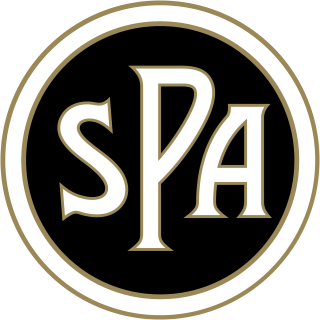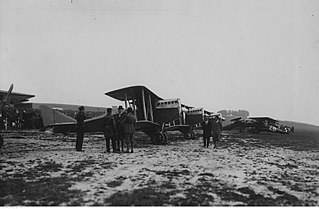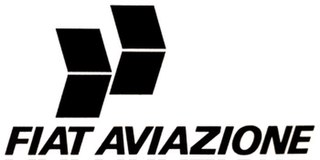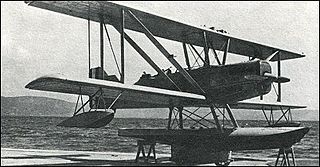The Royal Italian Air Force (RAI) was the name of the air force of the Kingdom of Italy. It was established as a service independent of the Royal Italian Army from 1923 until 1946. In 1946, the monarchy was abolished and the Kingdom of Italy became the Italian Republic, whereupon the name of the air force changed to Aeronautica Militare.

Leonardo S.p.A., formerly Leonardo-Finmeccanica and originally Finmeccanica, is an Italian multinational company specialising in aerospace, defence and security. Headquartered in Rome, Italy, the company has 180 sites worldwide. It is the 12th largest defence contractor in the world based on 2020 revenues. The company is partially owned by the Italian government, which holds 30.2% of the company's shares and is its largest shareholder.

S.P.A. was an Italian automobile, military vehicle and aero-engine manufacturer founded in Turin by Matteo Ceirano and Michele Ansaldi. It was active between 1906 and 1926. In 1908, it merged with Fabbrica Ligure Automobili Genova (FLAG) and the new company, Società Ligure Piemontese Automobili, was headquartered in Genoa while manufacturing in Turin.

The Ansaldo A.300 was an Italian general-purpose biplane aircraft built by the Ansaldo company of Turin from 1920 to 1929. It also served as a light bomber, transport, fighter and reconnaissance aircraft, and finally as an advanced trainer, with examples in service as late as 1940. 50 examples were also license-built in Poland at ZM E. Plage & T. Laśkiewicz, but were not a success due to poor quality.

The Autoblindo 40, 41 and 43 were Italian armoured cars produced by Fiat-Ansaldo and which saw service mainly during World War II. Most autoblinde were armed with a 20 mm Breda 35 autocannon and a coaxial 8 mm machine gun in a turret similar to the one fitted to the Fiat L6/40, and another hull mounted rear-facing 8 mm machine gun.

Eugenio di Savoia was a Condottieri-class light cruiser, which served in the Regia Marina during World War II. She survived the war but was given as a war reparation to the Hellenic Navy in 1950. Eugenio di Savoia was renamed Elli and served until 1965.

The Ansaldo SVA was a family of Italian reconnaissance biplane aircraft of World War I and the decade after. Originally conceived as a fighter, the SVA was found inadequate for that role. Its impressive speed, range and operational ceiling, with its top speed making it one of the fastest of all Allied combat aircraft of the war, gave it the right properties to be an excellent reconnaissance aircraft and even light bomber. Production of the aircraft continued well after the war, the final examples were delivered during 1918.

The Aviatik B.I is a German two-seat reconnaissance biplane designed and built by the Automobil und Aviatik AG company, who until then had produced copies of French designs.

The IMAM Ro.43 was an Italian reconnaissance single float seaplane, serving in the Regia Marina between 1935 and 1943.

The Dewoitine D.1 was a French single-seat fighter aircraft of the 1920s, built by the French industrial company Dewoitine.

Fiat Aviazione was an Italian aircraft manufacturer, at one time part of the Fiat group, focused mainly on military aviation. After World War I, Fiat consolidated several Italian small aircraft manufacturers, like Pomilio and Ansaldo. Most famous were the Fiat biplane fighter aircraft of the 1930s, the Fiat CR.32 and the Fiat CR.42. Other notable designs were the fighters CR.20, G.50, G.55 and a bomber, the Fiat BR.20. In the 1950s, the company designed the G.91 light ground attack plane.

The Macchi L.3, or later Macchi M.3, was an Italian biplane flying boat developed from the earlier L.2.

The Ansaldo A.120, sometimes called the FIAT A.120 since FIAT bought Ansaldo, was a reconnaissance aircraft developed in Italy in the 1920s.

The Piaggio P.6 was an Italian catapult-launched reconnaissance floatplane designed and built by Piaggio for the Regia Marina.

Sparviero was an Italian aircraft carrier designed and built during World War II of the Regia Marina. She was originally the ocean liner MS Augustus built in 1926 for Navigazione Generale Italiana, but was transferred to the new Italian Line after the merger of Navigazione Generale Italiana with the Lloyd Sabaudo and the Cosulich Line. The conversion was started in 1942 originally under the name Falco but was never completed, and the ship was never delivered to the Regia Marina. She began to be scrapped in 1947, a process completed by 1951.

The Macchi M.71 was an Italian flying boat fighter of the 1930s designed and manufactured by Macchi.
Ansaldo Energia is an Italian engineering company.

Officine Ferroviarie Meridionali or OFM was an Italian railway and rolling stock manufacturing company based at Naples.
Nidec Industrial Solutions is an Italian multinational company based in Milan, that designs and manufactures rotating electrical machines, Power electronics and industrial automation. It was founded in 2012 with the acquisition of Ansaldo Sistemi Industriali by Nidec Corporation. Working in electrical engineering, designs and manufactures of electric motors and generators, power electronics and control systems and automation for industrial applications, Nidec Industrial Solutions was founded in 2012 when Nidec, a Japanese multinational corporation listed on the TYO: 6594 and NYSE: NJ, NJ and ON TOPIX 100 Component and Nikkei, acquired Ansaldo Sistemi Industriali (ASI). ASI, an industrial branch of the Ansaldo Group, was privatized in 2000. Its markets include petrochemical, energy, steel, marine and industrial automation.

The 102/35 on Fiat 634N was an anti aircraft truck used by the Regia Marina during the Second World War.




















